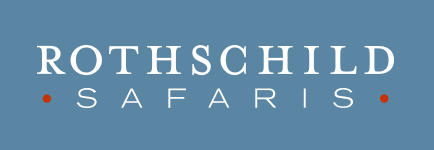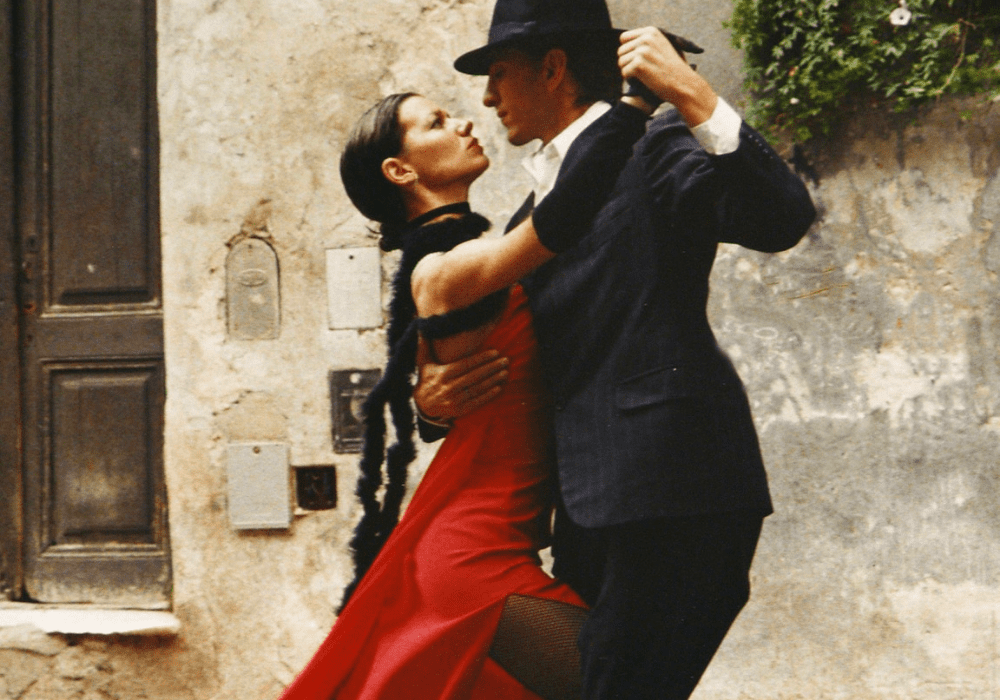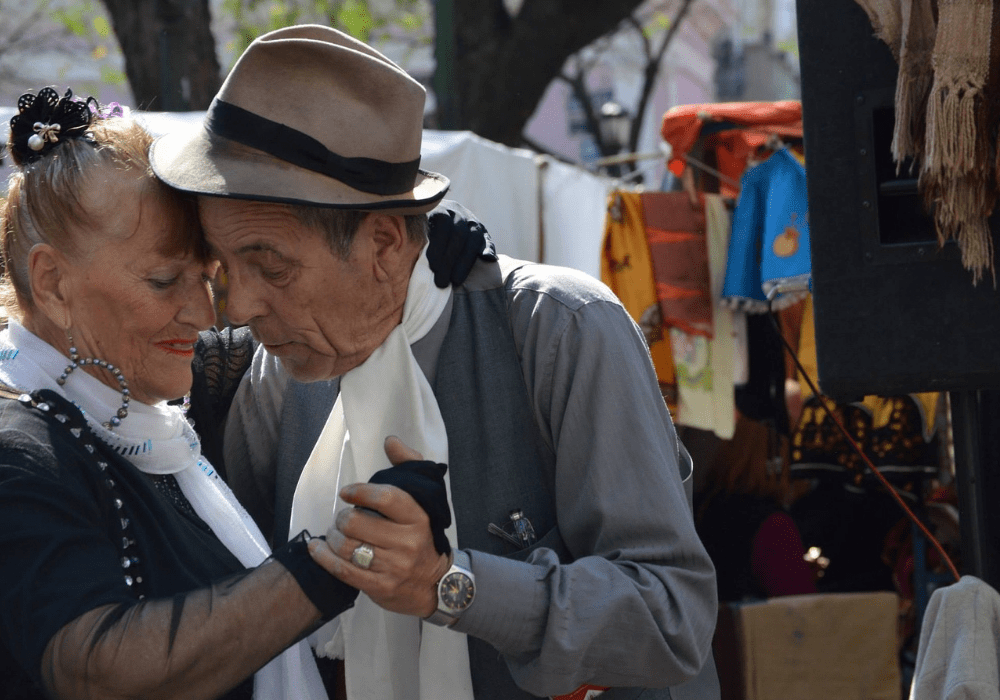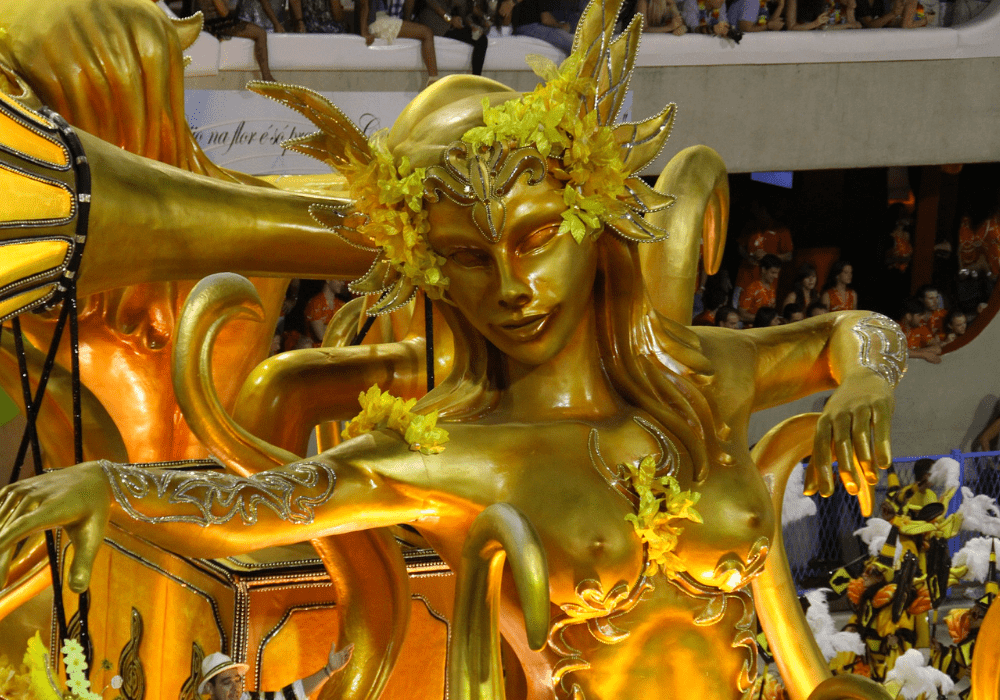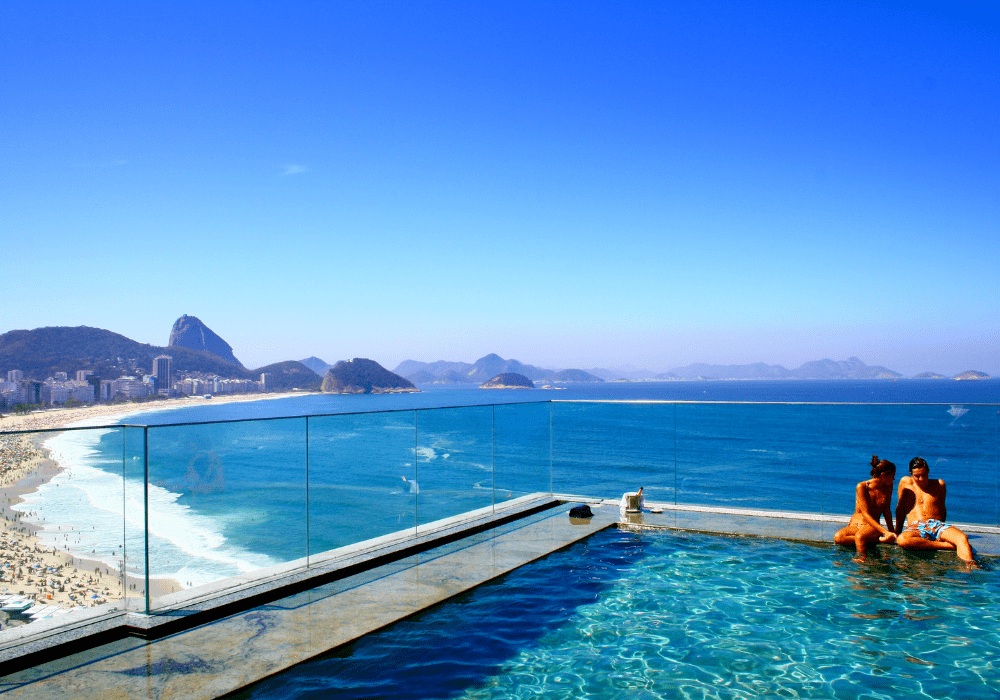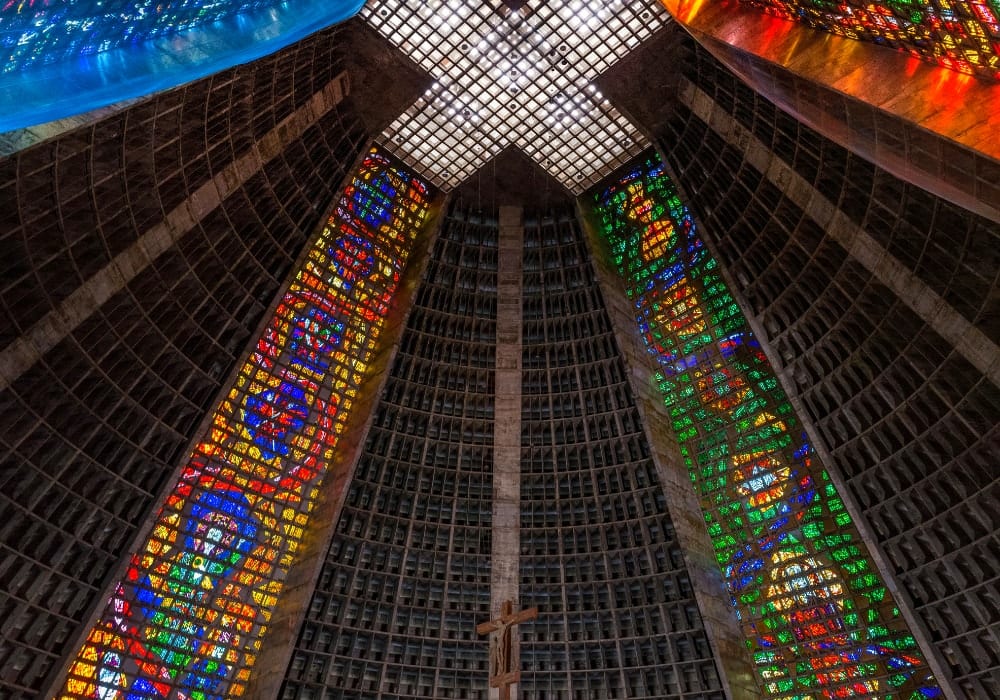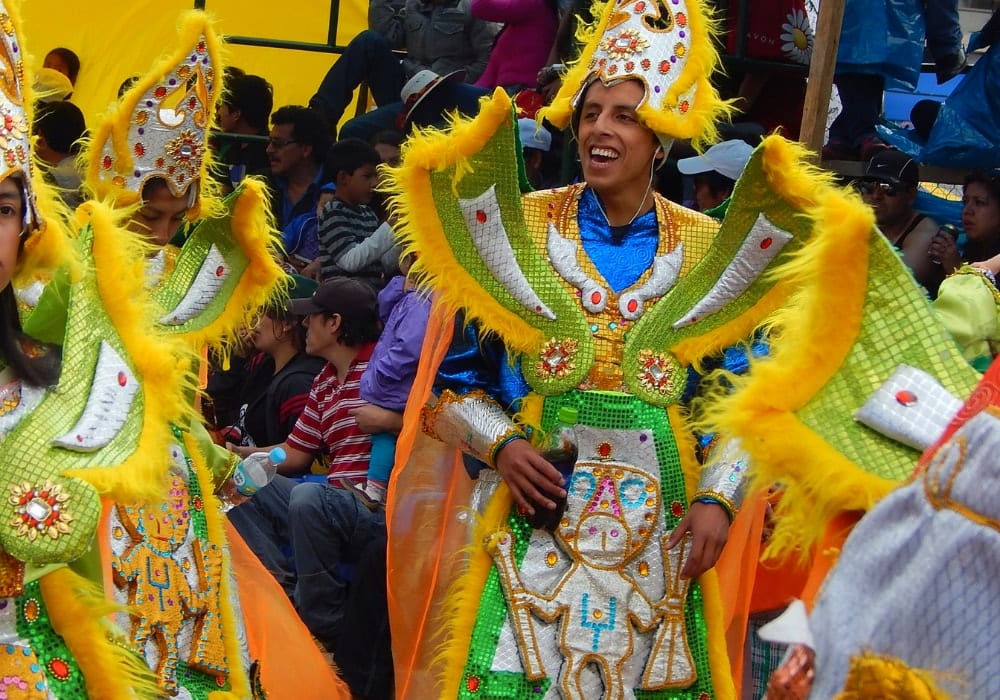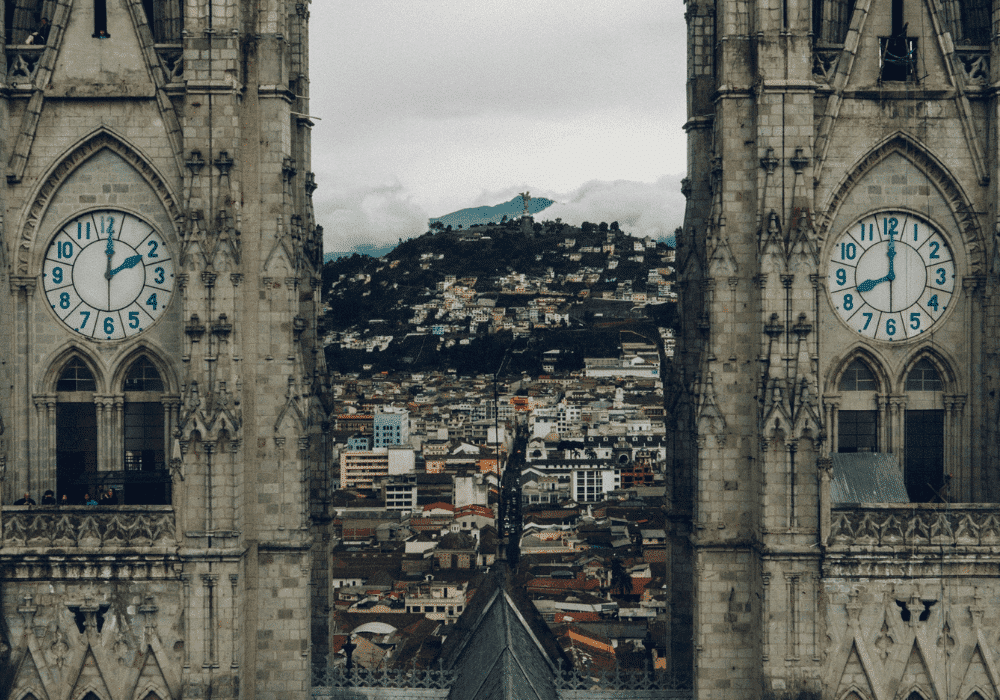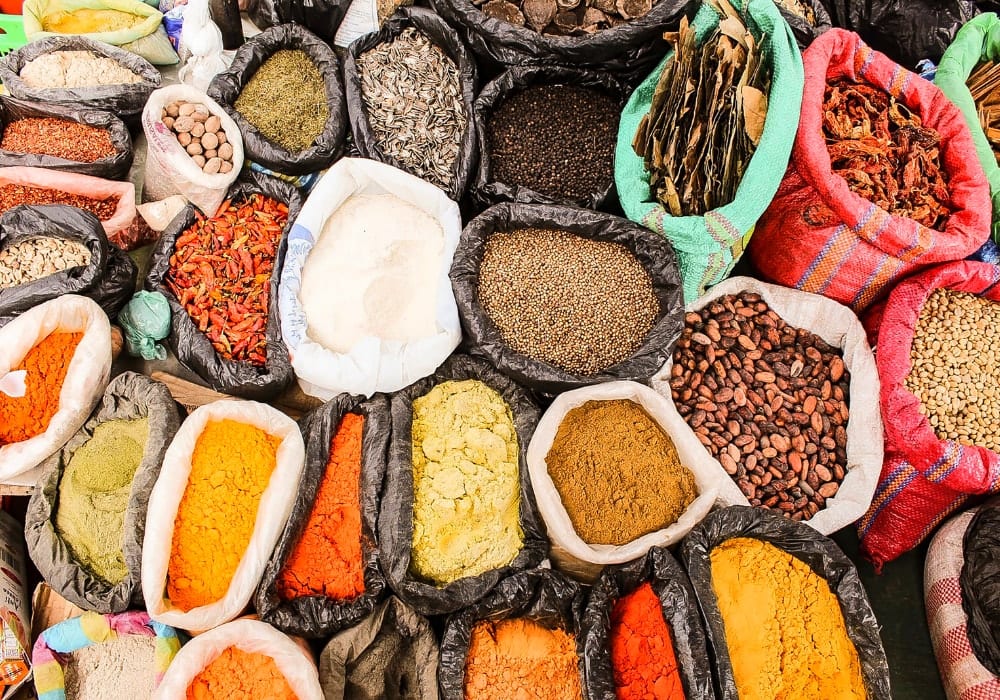Quick. Think of South America.
And just like that we have most probably filled your head with exotic colors and sounds and aromas. Because South America is quite frankly a little extra when it comes to passion and celebration. It walks the line between the comfortably modern and the outrageously historical like no other continent on earth. And there are few more intriguing places to attend a festival than South America.
When you finally book your Latin trip you might want to make sure your dates fall around these top festivals in South America. (Keep reading as they have a little something flamboyant for everyone!)
Argentina
ArteBA
An art event in the fashionable Palermo district of Buenos Aires that attracts tens of thousands of visitors and includes guided tours, public workshops for children as well as live performance and discussions.
Buenos Aires Tango
The heritage of the tango is celebrated every year in Buenos Aires. The World Cup of Tango (Tango Mundial) is held but tens of thousands of people will be dancing in the streets for two weeks.
Music and dance shows fill every crack and corner of the city, and there are hundreds of free classes throughout the city while the festival is on.
Fiesta de la Nieve
In Bariloche, the height of the ski season falls in July and August, and the National Snow Festival includes ski and boarding competitions but the avant and apres ski takes everything to the next level with live music, chocolate tastings, and massive fireworks displays.
Fiesta de la Vendimia
Mendoza is one of the world’s leading wine producers, and wine connoisseurs descend on the town once a year as the festival begin with a blessing of the vineyards by the Archbishop of Mendoza and continue with gauchos in traditional costumes, folk bands, the annual ‘Reina de la Venimia’ beauty pageant and… well, WINE.
Gaucho Festival in San Antonio de Areco
Gauchos riding the edges of Parque Crillio the cobbled streets filled with horses rushing past houses. There is also raucous dancing and music.
Bolivia

American Renaissance and Baroque Festival
San Javier becomes a music lover’s dream on even years in May. You can be carried back in time along orchestral heights at one of the best music festivals in South America.
The party started when they discovered 9,000 sheets of music during the Jesuit temple restoration. The music you will hear dates back to the ancient Chiquitos and Maxos cultures, and it is an incredible opportunity to listen to what was so nearly lost forever.
Fiesta del Gran Poder
The most popular religious festival in Bolivia pays homage to an icon of Jesus that goes by the name of Nuestro Señor del Gran Poder (Our Lord of Great Power). This goes by the name of a Catholic festival… but it owes its existence to indigenous Aymara culture. Hundreds of folkloric dances telling the stories of the people of the Andes and representing the different communities of the Andes move through the streets of the city, all the dancers dressed in extravagant traditional costumes and accompanied by brass bands. When the sun sets, the street parties begin.
Oruro Carnival
Hear the Diablada or Dance of the Devils throughout the country in February.
Brazil
Bumba Meu Boi
It means Beat my Bull but different parts of Brazil have different origin stories. The gist of the tale is: A farm owner asked his faithful ranch hand to look after his favorite bull; said ranch hand’s pregnant wife developed a craving for ox tongue; ranch hand kills the bull to feed his wife and then has to get a local shaman to bring the dead bull back to life.
Or something along those lines.
The story is translated into huge parades, giant ox floats, music, dancing and day-long parties all over the north. The best, and most famous taking place in the Amazonian riverside town of Parintins. They have two teams staging competing parades – one with a blue ox called Caprichoso and one with a red ox called Garantido. A vast cast of characters perform a dance-off in the town’s Bumbodromo.
The Festival of São João
A mid-winter festival that was initially introduced by Jesuit missionaries to replace to marking of the winter solstice by indigenous traditions it has become a celebration of rural life.
It has marriage at its heart with a bride and groom in full wedding regalia taking the lead in non-stop dances as a feature.
There is also a massive bonfire – in Caruaru, it is big enough to last at least 48 hours.
Piri Bier
If beer is your tipple of choice then quirky, vibey Pirenópolis, a short drive from the capital Brasilia celebrates specialty brews from across the country every year. The festival includes workshops and seminars, live music and much beer tasting.
Reveillon
No-one does New Year like Rio. You can go local on Copacabana Beach to enjoy the incredible fireworks across Guanabara Bay or rub shoulders with the rich and famous attending a private, masked ball in one of the posh hotels.
Dress in white in honor of Iemanja (the Candomblé goddess of the ocean) if you like to blend in. You can also carry flower garlands or wear scarves and bandanas to reflect your New Year’s resolutions:
Red for romance
Green for health
Yellow for prosperity
At the end of the night, white flowers and floating candles are sent out to sea as offerings to Iemanja.
Rio Carnival
You know we have to begin with the true assault on the senses!!! Forty days before Easter Brazil comes to a standstill. While the country waits to exhale everyone dusts off their most flamboyant costumes and drink and dance every night away. The grand parades through the city’s Sambodromo (designed by famous modernist Oscar Niemeyer) and the ‘stadium of samba’ presents a flow of original songs and costumes.
Many of the performers come from samba schools in Rio’s poorest neighborhoods and they practice throughout the year for the four days of Carnival. The inspiration comes from tradition but the interpretation is clever and humorous and reflects their own Rio.
And there is more!
The Salvador da Bahia Carnival
An incredible street party with six different parade routes – not featuring costumes and drummers but trio electrico (sound systems on articulated lorries) with abadas… and you may become an abada through the simple act of buying the right tabard the day before. If you don’t want to pledge allegiance, you can just pitch up and dance (this is called being a pipoca or popcorn) with a different bloco every night.
The style of dance is not limited to Samba either. Many Bahian forms of music such as Axé and Afoxês (taking inspiration from the African religion of Candomblé) can be found.
Chile
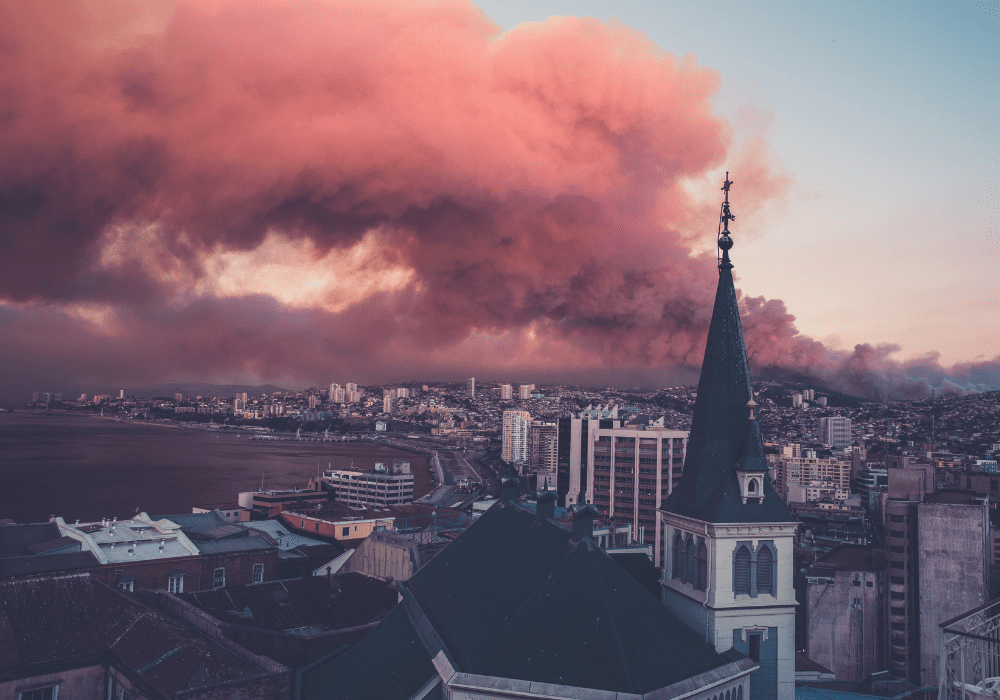
Tapati Rapa Nui
Easter Island’s biggest festival is beautifully traditional but nevertheless, it welcomes visitors with open arms. The festival dates back further than anyone can remember and it now incorporates elements that might surprise a student of Polynesian history. Traditional carving competitions and canoe races sit happily next to modern horse races and a triathlon
During the Haka Pei contestants slide down steep hills on banana tree trunks at speeds of up to 50 mph (80 kmh).
Colombia

Barranquilla
One of the most genuine carnival experiences you can have. The birthplace of Shakira on Colombia’s Caribbean coast is always lovely to visit but during Barranquilla, you can check your senses at the hotel doors and enjoy one of the biggest extended street parties in the world.
There is a six-hour Batalla de Flores parade with all the usual suspects, and for the next three days, the city is inhabited by parades, giant papier-mache characters, music, dancing, and drinking. It all comes to an exhausted end with the ceremonial (acted) death of Joselito, the official carnival mascot, who fittingly, expires from drunken exhaustion in a raucous and rousing finale.
Feria de las Flores
During 10 days of August, the city of Medellin is completely covered in the boldest garlands of blooms for the annual Flower Fair. There are also competitions, folk concerts and the Desfilo de Silleteros parade where the farmers make beautiful flower arrangements of a silleta (a portable flower arrangement stage) which is carried through the city. Free outdoor concerts, art exhibitions, cookery classes… it is all happening at the same time.
The exhibition gardens in the city’s Botanical Gardens will take your breath away
Rock al Parque
This is the biggest rock event in South America. Colombia may be the land of the Salsa but they also love their rock and entry is free.
Ecuador
Fiestas de Quito
Quito’s foundation date is 6 December, and the city prepares for this auspicious occasion with a week of celebrations leading up to the anniversary.
Expect (mostly free) concerts, parties, exhibitions, theater shows, and a go-cart race
Inti Raymi
The Incas worshipped the sun and during their winter solstice, they honor the imminent return of their favorite deity with the Inca festival of the Sun. This is the beginning of the Incan New Year and the festival will last for nine days.
Every June a lucky actor portrays Sapa Inca (the emperor) and is then carried in a golden chariot from Qorikancha temple, through streets filled with music, prayers, flowers, dancing, and ladies sweeping away evil spirits with their brooms, to the top of Sacsayhuaman hill outside Cusco. The ancient Inca ritual of praying for the return of the sun is then re-enacted in the ancient Inca fortress.
In Otavalo, the center of indigenous culture in Ecuador, festivities begin with a ritual cleansing the Peguche waterfall before the dancing and drinking.
It has become the largest street festival in South America.
New Year Quiteños Style
In Quito giant dummies parade through the city before being ritually set alight (in fires that can burn for days) as a symbol of the old year. Young men dress up in mini-skirts, stockings and gigantic plastic {insert that thought}. They are called viudas (widows) and it is an extraordinary site in this fairly conservative country!
Carnival
Characterized by hundreds of children called diablillos (little devils) who roam the streets armed with water bombs in every shape and form you must prepare to get soaked in this carnival.
It is the biggest party of the year with all the parade and firework trimmings.
Salon de Chocolate
Ecuador does not produce more high-quality chocolate than anywhere else on earth without having a festival to celebrate the fact! Thousands of people descend on Quito to enjoy exclusive chocolate tastings from big and small Ecuadorian producers, and the chocolate sculpture competition is particularly impressive (even from the dizzy heights of a sugar rush).
Semana Santa
Ecuador’s most important festival has its largest public celebration in Quito. During the Jesus de Gran Poder procession, 800 purple-robed Cucurochos bring an image of Jesus to the Quito cathedral. The particular Ecuadorean synthesis of Catholic rites and indigenous traditions is on display everywhere with painted and costumed devils driven from a church… only to meet up later to eat drink and be ritually cleansed.
Yamor
The largest market town of Ecuador, Otavalo hosts the Yamor Festival in September. A tradition that is equal parts Pagan fertility ritual and Catholic Spring festival for Nina Maria (virgin patron of Otavalo), it takes place once the first crop of the year has been sown.
The country’s most prominent contemporary music festival is held at the edge of town, and young men swim the 4km of freezing water naked (insulating their bodies with fat) as part of this celebration.
Peru
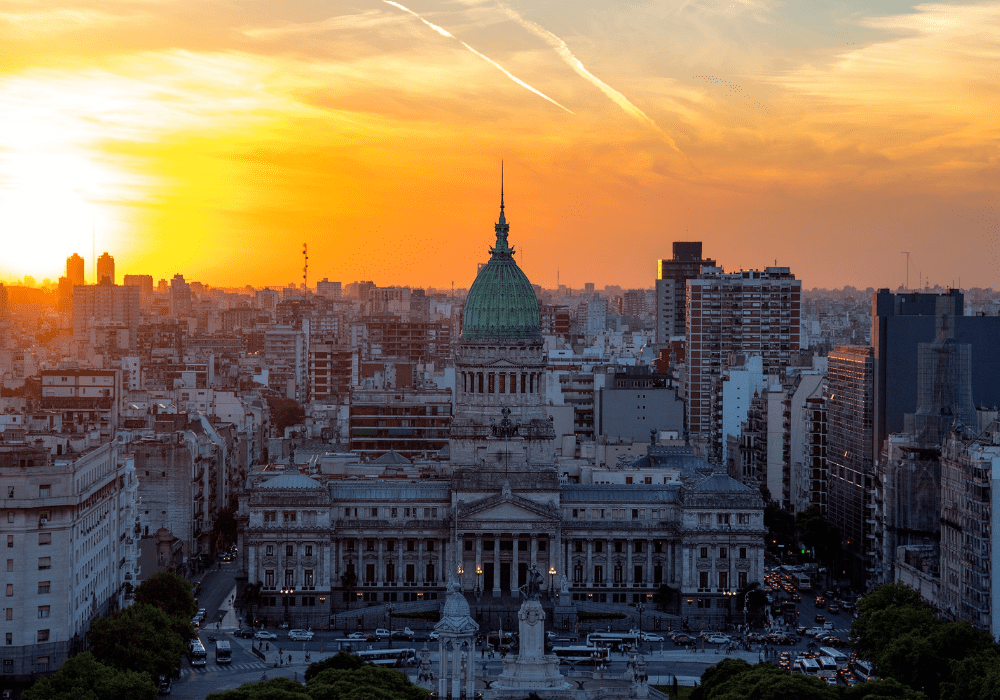 Fiestas Patrias in Peru
Fiestas Patrias in Peru
Every year on the 28th of July Peru marks its 1821 independence with a 21-gun salute which is a general signal to Peruvians to down tools and start celebrating.
There are parades by the Armed Forces and Police, and an address from the President and everyone has not one but TWO full days of work.
Mistura
Do you live to eat? Head to Peru in September for the incredible culinary tradition of Mistura. From the famous ceviche (marinated raw fish) to cuy (deep fried guinea pig) and sanguche de chicharron (the local version of a bacon sandwich).
While the festival began as a showcase of the very best in Peruvian cuisine, from traditional dishes based on ancestral recipes and modern takes on classic Peruvian recipes it now also represents the best of broader Latin American cuisine.. and then there is the fusion. Chifa (Chinese) and Nikkei (Japanese).
This festival will leave you with a delicious understanding of what all the fuss around Peruvian food is all about.
The National Paso Horse Tournament
A festival at the Mamacona stables on the southern edge of Lima, next to the pre-Inca sacred site of Pachacamac, it attracts an international crowd of equestrian movers and shakers – all keen to see the best in breed horses doing their thing.
The marinera dance (closely associated with Paso tradition) is also showcased and there is a celebratory feast at the end of every day.
Semana Santa
In Ayacucho, this important Peruvian tradition is taken to a dizzying height. The streets are literally carpeted in flowers while giant processions happen throughout the week with icons of saints carried across the blossoms.
On the Saturday before Easter Sunday, a massive candlelit procession with an image of Jesus carried to the city’s Cathedral ends in a firework display signaling the start of the Resurrection party.
Señor de los Milagros
It’s a miracle! In Lima, a freed Angolan slave painted the image of a black Christ on the cross on a wall in the 17th Century. Despite massive earthquakes and many attempts at vandalism, the artwork has remained miraculously intact. To celebrate this, thousands of devout Catholics for all over Peru begin a procession from the Church of Las Nazarenas, with 2500 members of the Lord of the Miracles brotherhood carrying the two-stone artwork through Lima to the church of La Merced.
This is one of the biggest Catholic festivals in the world but if you want to blend in as a woman do wear a purple dress with a white robe and men should don a purple tie. (Purple is the traditional color of the Nazarene nuns who care for the image throughout the year)
Prepare to eat lots of traditional Turron nougat and picarones.
Virgen de la Candelaria
Puno hosts one of the Andes’ largest celebrations with around 40,000 dancers and 5,000 musicians every year. It is a great example of how indigenous people took Catholic traditions and made them their own.
The Virgin is called MamaCanchi and is closely associated with the traditional Pachamama (Mother Earth) deity. The festival centers on the myth that Lake Titicaca was the founding point of the Inca Empire and it is a fantastic date for anyone with interest in traditional culture.
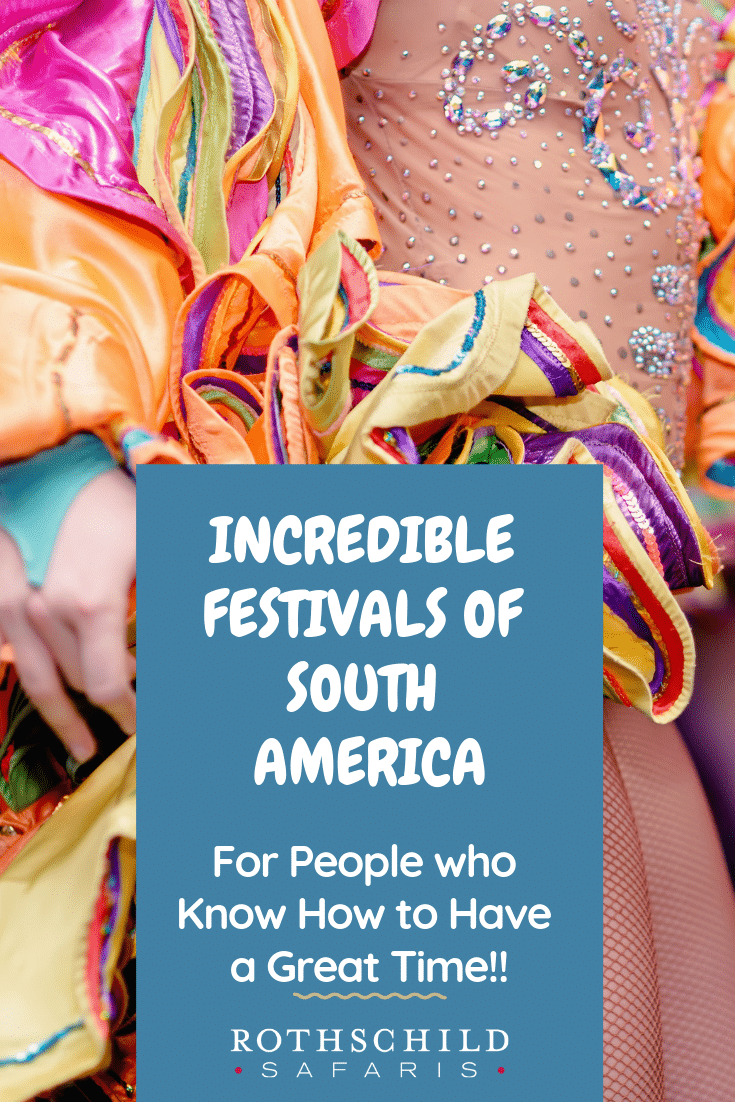
Images via Tung Wong, Shot by Cerqueira, Pixabay, Pixabay, Andrea Leon, Chandler Hilken, Pixabay, Pixabay, Sander Crombach, Pixabay, Pixabay, Pixabay, Pixabay, Pixabay Pablo García Saldaña
and/or
